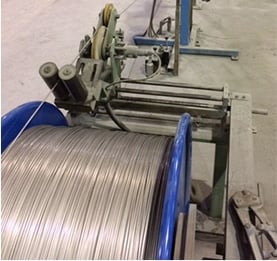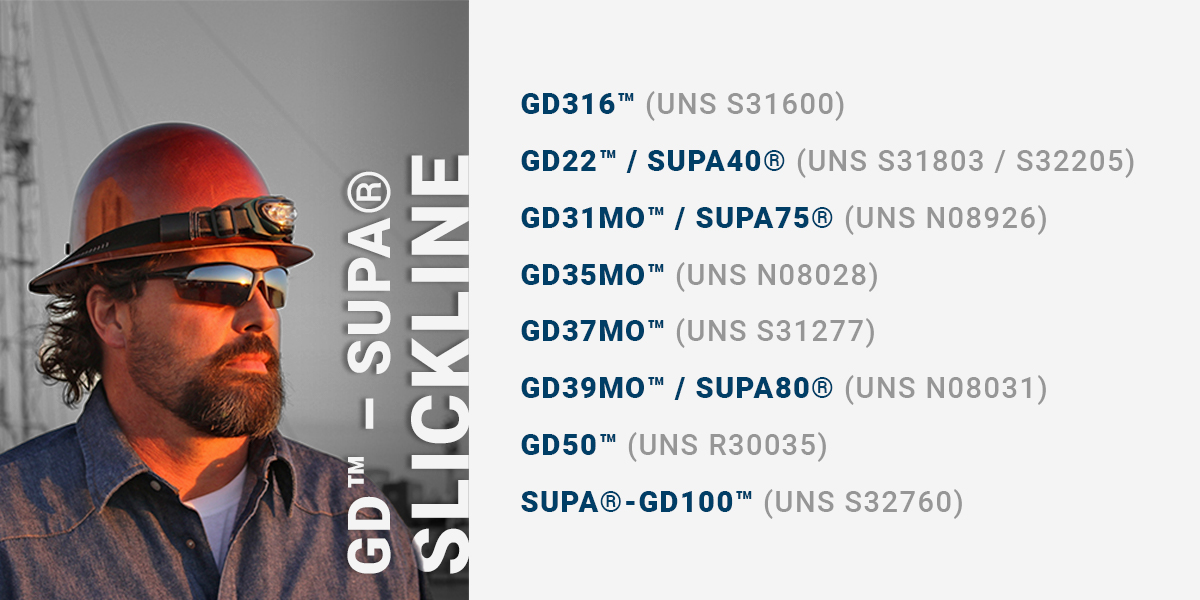High-quality Slickline Protect Against Failures and Costly Downtime
Corroding, cracking, or kinking slickline is a recipe for failure in any downhole project. Damaged slickline can cause delays in logging and production, or worse, potentially result in broken lines, lost tools, or even injuries to the crew. The durability of your slicklines, whether they be for oil, gas, or geothermal production, matters to you, and the profitability of your well. Safe and effective energy production starts with durable slicklines. Protect yourself against slickline failure by following these three tips:
 Select the Proper Slickline
Select the Proper Slickline
As oil and gas wells provide more challenging environments, it is not easy to select the correct material for these conditions. If possible, select the proper base alloy (Stainless Steel, Nickel, etc.) to match with your well conditions by working with an experienced metallurgical team, oil & gas industry and applications experts, or by using a selection guide like the one found here. Most slickline manufacturers will be able to recommend a suitable grade of material, and should be able to assist you in the selection of specific materials for your specific well environment.
Verified Quality
Only purchase slicklines with a certificate of conformance that states physical and mechanical properties, including alloy chemistry and breaking load. Select a product that has been manufactured under stringent quality controls that ensure traceability from wire rod to finished line, and tested to confirm performance standards. Look for slicklines that can be verified by an independent lab to meet EN10204 standards. Select products that have been manufactured with high-quality alloys to provide consistency and reliability. In addition, our slickline is manufactured from alloys designed to provide a continuous 30,000 feet (9,144 m) weld-free, bright-finish wireline.

Maximize Your Slickline Life
To maximize the life of your slickline, we suggest following these guidelines:
• Confirm the wire is suitable for the expected well conditions. CWI experts can help you determine that.
• Use a Vernier Caliper to check the wire OD.
• Use new packing in the stuffing box and change the wire guides if they show signs of excessive wear.
• Use correct sized sheaves (rule of thumb – sheave diameter = 120 x wire OD.)
• Always lubricate the wire when running into the well.
• Never exceed the maximum allowed wire tension. This will be set at a maximum of 60% of the breaking load reported on your CWI issued test certification.
• Clean the wire pulled from the well; use a wireline wiper to remove well fluids.
• Always update the wire logbook with the wire-cut off and data from the operation.
Quality Starts With GD™-SUPA® slickline from Central Wire Industries
Low-quality slicklines that suffer from corrosion, kinks or cracks can cause more than headaches. Effective energy production starts with effective slicklines. High-quality GD™-SUPA® slickline from Central Wire Industries can help you reach your goals. Our manufacturing plants in the United States, Canada and the UK are each ISO 9001:2015 registered and certified under the newest versions of the respective QMS standards. This means that from the ground-up, we are committed to ensuring our customers receive a reliable and durable product.
Regardless of your needed alloys or forms, our slicklines can provide the durability and performance you need. Buying a high-quality product like our GD™-SUPA® slickline wireline, and following proper maintenance requirements, can ensure a successful drilling operation.


